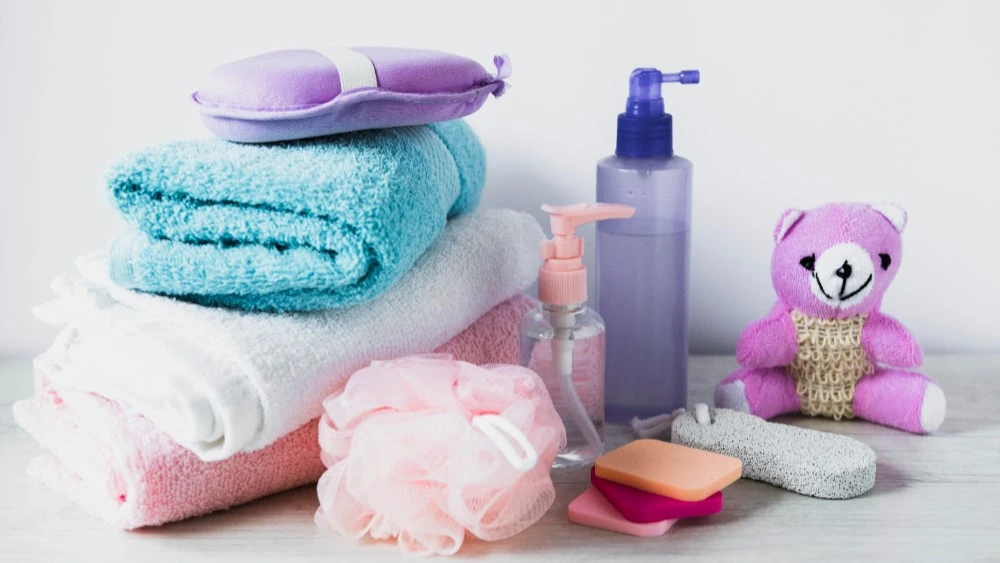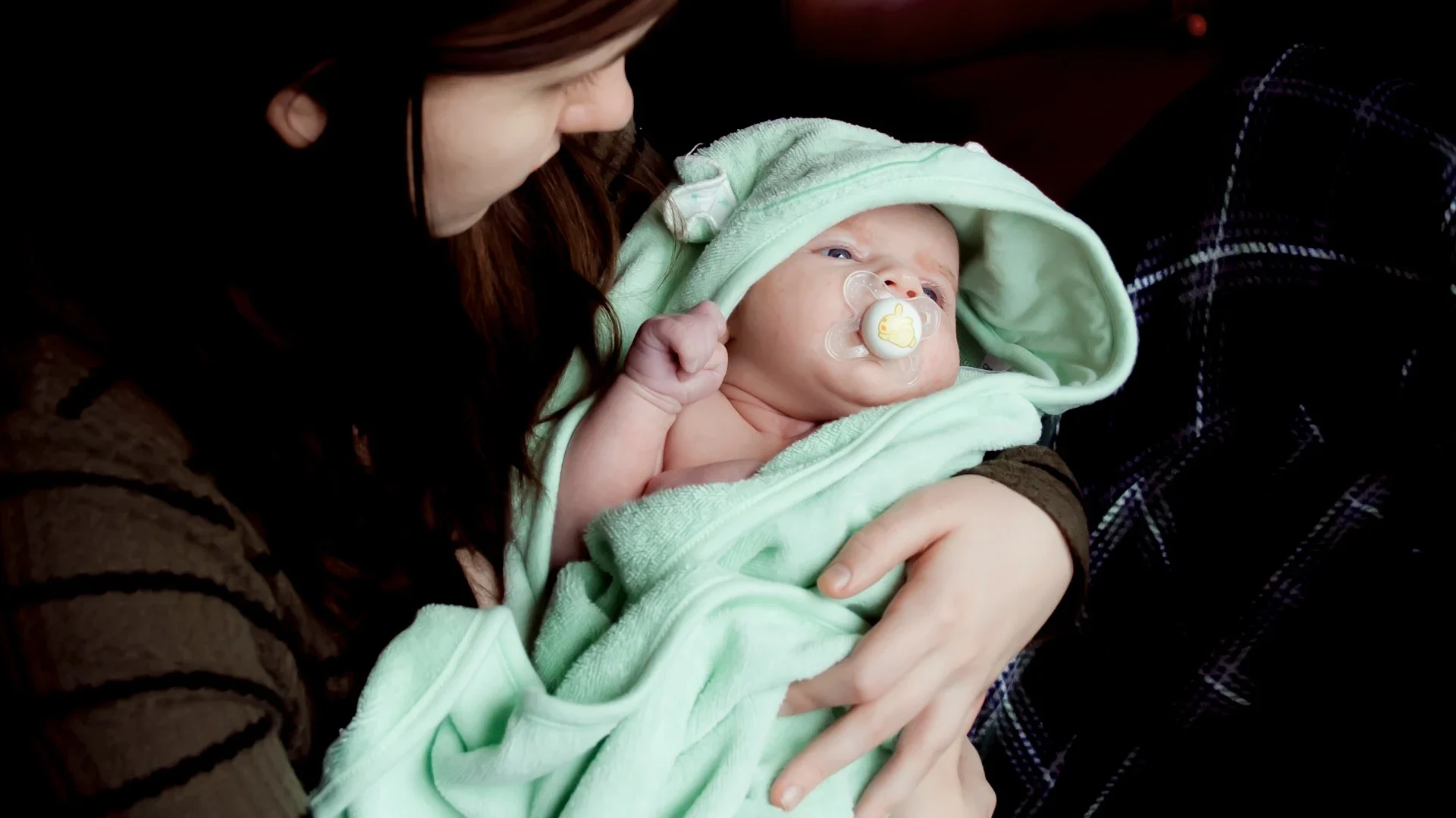Bathing a newborn for the first time is one of those parenting milestones that feels equally exciting and daunting.
Over 70% of new parents feel nervous about their baby’s first bath, making it one of the most common early parenting anxieties. Trust me, I was definitely in that group!
I remember standing there, holding my tiny, squirmy baby, wondering if I was doing anything right. But here’s the thing: sponge bathing is not only easier than you think, but it’s also the safest option for your newborn until their umbilical cord stump falls off.
Sponge bathing a newborn is essential to keep their delicate skin clean and healthy without causing irritation. And it’s not just practical—it’s an amazing bonding experience too!
Imagine your baby’s tiny giggles and coos as you gently clean them. I’ll guide you through every step, sharing tips I learned (and a few mistakes I made) along the way.
By the end of this guide, you’ll feel confident, calm, and ready to create some truly cherished memories. So, let’s dive in and make bath time a breeze!
When and Why Babies Should Get a Sponge Bath
The American Academy of Pediatrics recommends giving your baby a sponge bath until their umbilical cord stump naturally falls off. This is the safest way to clean your newborn without disrupting the healing process.
Typically, the umbilical cord stump falls off within 2 weeks, but it’s normal for this to happen anywhere between 5 to 15 days after birth. According to a 2016 study, this timeline can vary slightly depending on the baby’s individual healing process.
Additionally, a sponge bath might be necessary if your baby has undergone any surgical procedure or has stitches or bandages that need to stay dry. Keeping those areas clean without direct water exposure is crucial for proper healing and avoiding infections.
Why Sponge Bathing Is Important for Newborns
Sponge bathing isn’t just a cleaner choice for your newborn; it’s a safer one too. When my first baby was born, I didn’t realize that regular baths could actually irritate their sensitive skin or wet the umbilical cord stump, delaying its healing. A sponge bath helps avoid all that hassle and keeps things simple.
For starters, it’s the best way to gently clean their tiny folds and creases without overwhelming them with too much water.
Newborns have ultra-sensitive skin, and overexposing them to water or soap can cause dryness or irritation. Plus, it’s a bonding experience! Those little giggles and coos make all the effort worth it. I remember the first time my baby gave me a little smile during bath time—it melted my heart.
As they say, "The smallest moments often create the biggest memories," and bath time with your newborn is no exception.
It’s also perfect for those early days when your baby doesn’t get very dirty. After all, they’re not exactly rolling in the mud, right? But don’t underestimate how quickly milk dribbles and diaper blowouts can add up!
A sponge bath lets you keep them fresh and comfortable without overdoing it. So, take it slow and enjoy the process—your baby sure will!
What You’ll Need for a Sponge Bath
When it comes to sponge bathing a newborn, having the right supplies on hand makes a world of difference. Trust me, scrambling for a towel with a wet, wiggling baby is not fun! Here’s what you’ll need:

- Soft washcloth or sponge: Go for something gentle—their skin is way more delicate than ours.
- Baby-safe soap: Choose one that’s fragrance-free and hypoallergenic. I once made the mistake of using a scented soap, and my baby broke out in a rash. Lesson learned!
- Warm water: Aim for a temperature around 100°F. Use your wrist or elbow to check—it should feel warm, not hot. A thermometer can also help if you’re feeling unsure.
- Towel or blanket: You’ll need this to keep them cozy before and after the bath.
- Clean diaper and clothes: Have these ready to go. Babies don’t like waiting while you fumble around.
- Optional extras: A small plastic basin for water, baby lotion for after the bath, and a waterproof mat to catch any drips.
Set everything up in a safe, comfortable space. I used to use the kitchen counter with a towel underneath, but a changing table or a bed works just as well. Just make sure it’s stable and within reach.
And if you’re feeling fancy, you can even play some soft lullabies to make the experience extra soothing for your little one.
Before we dive into the steps, let’s take a moment to appreciate that this isn’t just a task—it’s a bonding experience. Each little giggle or coo makes it all worthwhile!
Step-by-Step Guide to Sponge Bathing Your Newborn
Let’s get down to it! Here’s how to sponge bath a newborn without breaking a sweat (well, mostly). As the saying goes, “Preparation is the key to success,” and it couldn’t be more true for bath time with your little one!
Step 1: Prepare the Space
Choose a warm room where your baby won’t get cold. Lay out all your supplies within arm’s reach.
Trust me, you don’t want to leave your baby unattended for even a second. I learned this the hard way when I realized I’d forgotten the towel and had to call my partner for backup!
Step 2: Start with the Face
Dampen the washcloth with warm water and gently wipe your baby’s face. Skip the soap here—their face doesn’t need it.
Pay special attention to their eyes and nose, wiping from the inside out. I always found this part surprisingly calming—it’s like giving your baby a mini spa day!

Step 3: Move to the Neck and Arms
Babies love tucking milk and lint into their neck folds. Gently lift their chin and clean those areas. Then move on to their arms, one at a time, keeping the rest of their body covered. This helps them stay warm and cozy while you work.
Newborns can lose heat up to four times faster than adults, which makes it essential to keep them warm during a bath.
That’s why keeping them covered during the bath is so important.
Step 4: Clean the Body
Use a bit of soap on the washcloth to clean their chest, back, and tummy. Avoid the umbilical cord stump—you don’t want to get it wet. Make sure to clean under their arms and between their little rolls. It’s amazing how much lint can hide in there!
Step 5: Finish with Legs and Diaper Area
Finally, wash their legs and diaper area, using a fresh section of the washcloth. For girls, wipe front to back to prevent infections.
I always kept a second washcloth handy for this step—it just felt more hygienic.
Step 6: Dry and Dress
Pat your baby dry with a soft towel and immediately wrap them up to keep warm. Apply lotion if needed, and dress them in a clean diaper and clothes.

Done! And don’t forget to give yourself a little pat on the back too.
Safety Tips and Common Mistakes to Avoid
Here’s the part where I’ll save you from making some of the mistakes I did:
- Don’t leave your baby unattended. Even for a second! I once turned to grab something and almost gave myself a heart attack.
- Check the water temperature. If it feels too hot to you, it’s definitely too hot for your baby. Better safe than sorry.
- Use minimal soap. Babies don’t need much, and too much soap can dry out their skin. Less is more here.
- Keep them warm. Cover the parts of their body you’re not washing to avoid chills. I like to call it the “baby burrito” method!
And remember, it’s okay to feel unsure at first. With practice, you’ll get the hang of it. Before you know it, sponge baths will become a regular part of your routine.
FAQs About How to Sponge Bath a Newborn
Two to three times a week is plenty. Over-bathing can dry out their skin
Once the umbilical cord stump falls off, usually around 10-14 days.
That’s normal! Try talking or singing to soothe them. Some babies just need time to get used to it. My little one loved hearing “Twinkle, Twinkle.”
Stick to baby-safe soap. Their skin is too sensitive for harsh chemicals.
Conclusion
Sponge bathing your newborn can be a bit nerve-wracking at first, but it’s a special bonding moment you’ll cherish forever.
By following these steps, you’ll ensure your baby stays clean, comfortable, and safe. Remember, every baby is different, so don’t be afraid to tweak the routine to suit your little one’s needs.
Have tips or stories to share about your first sponge bath experience? Drop them in the comments below—I’d love to hear them!
And hey, bookmark this guide for quick reference next time you’re prepping for bath time. You’ve got this, parent!









